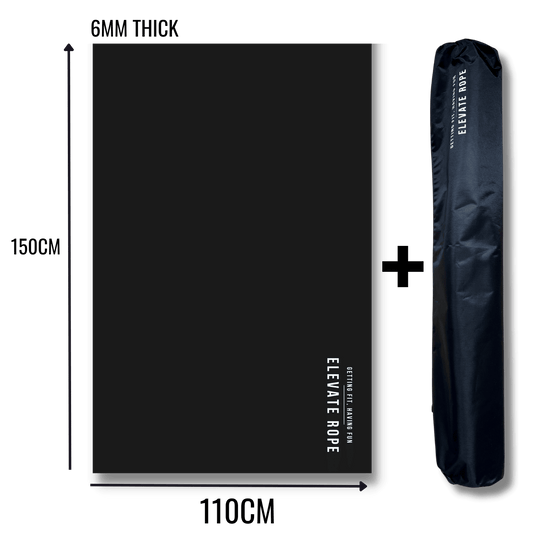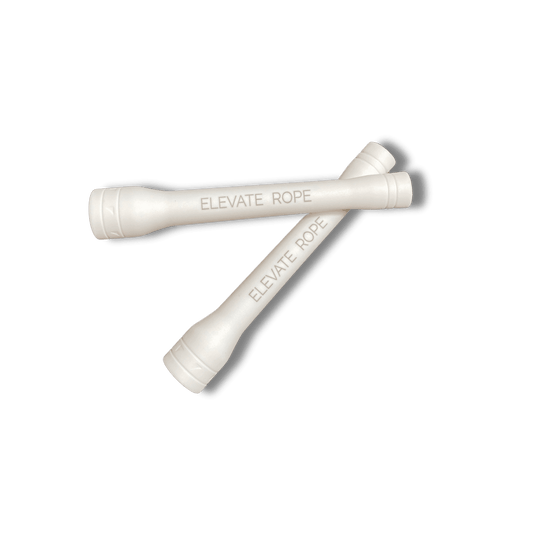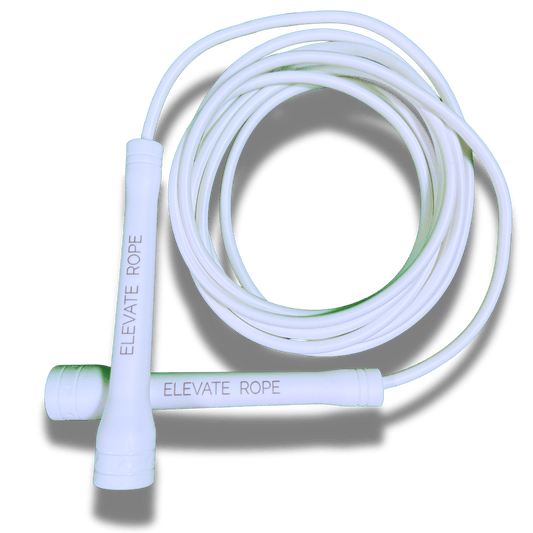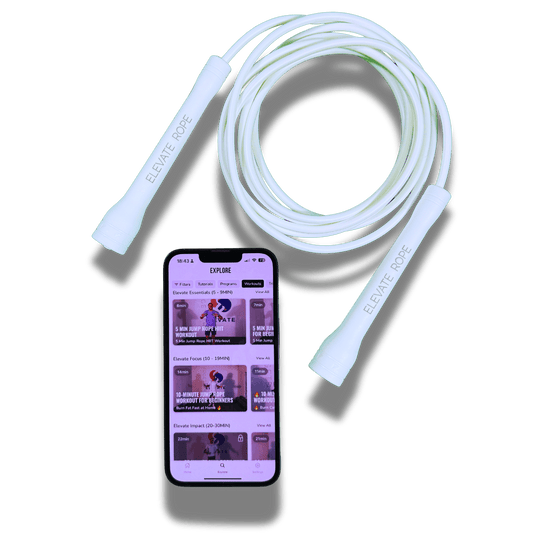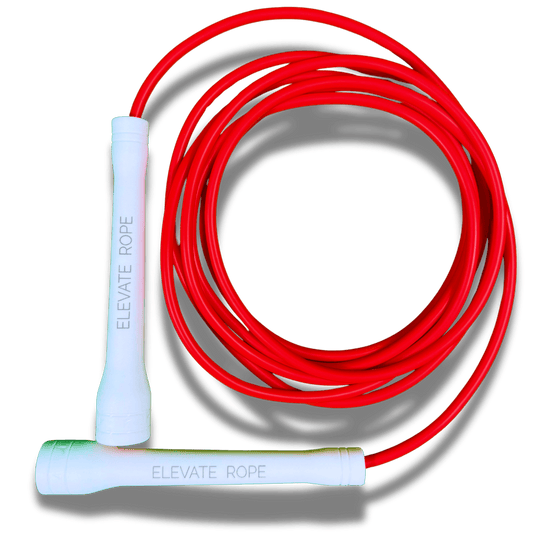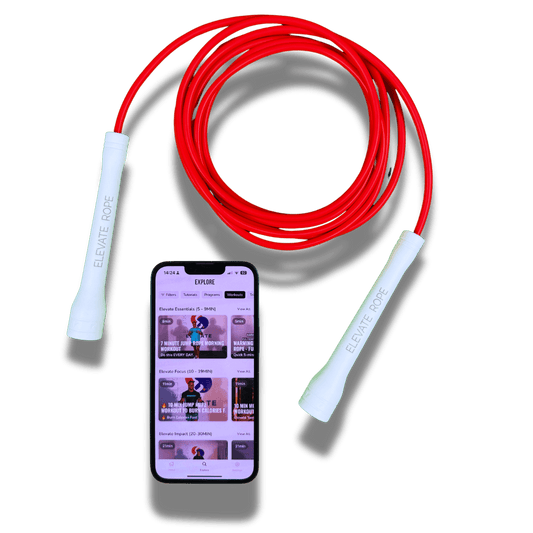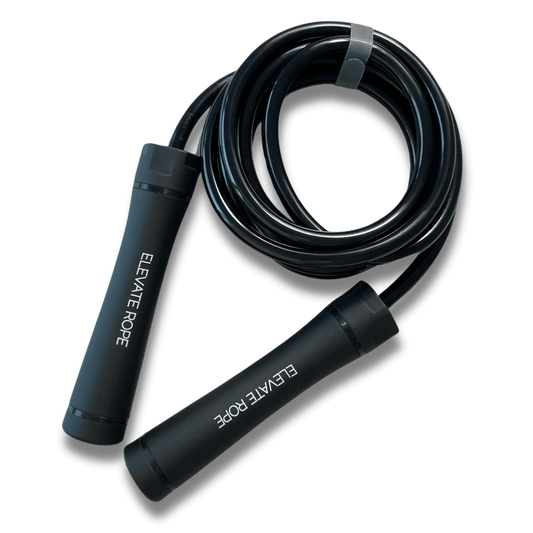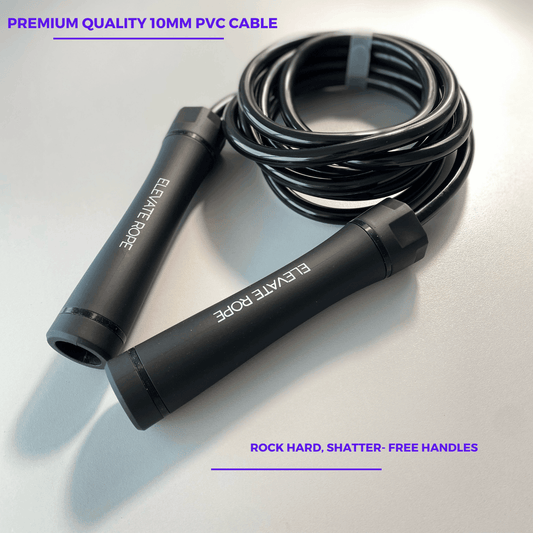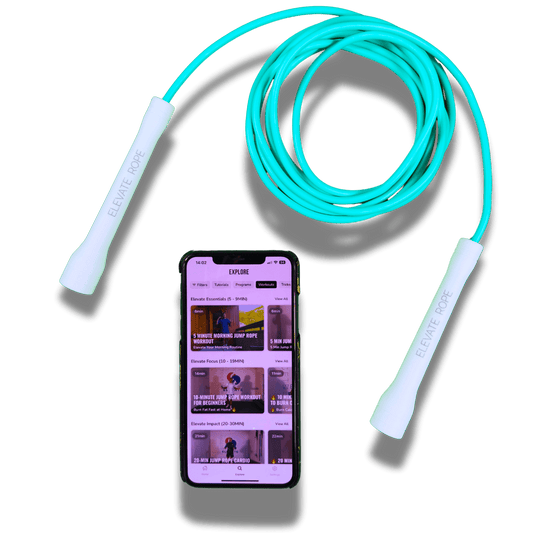🏀 Basketball Footwork Drills With Rope Training
If you want faster feet, sharper reactions, and explosive agility on the court — start with a rope and basketball
Jump rope training isn’t just for boxers. It’s one of the most effective tools for basketball players looking to elevate their coordination, balance, and movement control. Whether you’re attacking off the dribble or locking in on defense, rope drills build the rhythm, speed, and reactive power you need to dominate the game.
The best part? It only takes 10–15 minutes a day.
Let’s break down how rope training transforms your footwork — and give you drills, plans, and pro tips to make it part of your weekly routine.

Why Jump Rope Improves Basketball Footwork
Basketball is a rhythm sport. Every crossover, step-back, and closeout depends on timing and precision — and that’s exactly what jump rope develops.
Here’s how:
- Reactive coordination: Quick rope turns train your nervous system to fire faster.
- Elastic power: You learn to load and unload energy efficiently — perfect for first-step explosiveness.
- Balance & control: Continuous jumps strengthen stabilizer muscles, keeping your movement clean.
- Endurance: High-paced rope sets build cardio fitness without the joint stress of running.
In short, jump rope is the missing link between agility and athletic control.
When done right, it teaches you to stay light on your feet — the foundation of elite footwork.
Core Jump Rope Benefits for Basketball Players
Jump rope isn’t just conditioning. It directly impacts how you move, pivot, and explode on the court.
1. Faster Reaction Time
Each rotation demands timing. Over time, your body automatically reacts quicker to visual cues — a crucial edge when defending or cutting.
2. Enhanced Agility & Direction Change
Lateral rope drills mimic defensive slides and cuts, helping you shift direction explosively without losing control.
3. Stronger Ankles & Better Balance
Rope training builds tendon strength and ankle stability — two of the biggest injury-prevention factors for hoopers.
4. Game-Ready Conditioning
Short, high-intensity rope intervals mirror basketball’s pace — sprints, stops, jumps, and resets. You’ll last longer and recover faster between plays.
5. Mental Focus & Flow
Jumping rope forces concentration and rhythm. That “locked-in” state carries directly onto the court during games and drills.

Basketball Footwork Drills Using Rope Training
Here are the best rope drills to develop basketball-specific agility and rhythm. Each one directly translates to movement patterns you use during a game.
1. Split-Step React (First Step Explosion)
How: Two rope swings → jump into a quick split stance → bounce twice → reset.
Why it works: Trains reactive load → explode mechanics used for quick drives and closeouts.
Sets: 4 × 30 seconds, rest 15s.
2. Lateral Line Hops (Defensive Agility)
How: Jump side to side over an imaginary line every 2–3 turns.
Why it works: Replicates defensive slides and micro-adjustments.
Sets: 4 × 30 seconds.
3. Skater Bounds With Rope (Explosive Lateral Drive)
How: Jump rope while performing small skater hops side-to-side.
Why it works: Builds hip and glute power for side-to-side movement.
Sets: 3 × 20 seconds per side.
4. Double-Unders (Vertical Power & Control)
How: Perform one high jump per two rope turns.
Why it works: Develops calf elasticity, leg drive, and timing for vertical jumps.
Sets: 5 × 10 reps.
5. Crossover Steps (Body Feints & Coordination)
How: Cross the rope in front of you every 3–4 jumps, alternating direction.
Why it works: Improves upper-lower body coordination — essential for combo moves and crossovers.
Sets: 3 × 45 seconds.
👉 Tip: Keep your jumps low and land softly. Quiet landings = controlled footwork.
4-Week Jump Rope Plan for Basketball Players
Goal: Build reactive strength, rhythm, and conditioning while improving footwork control.
🕐 Duration: 4 weeks
⏱️ Frequency: 3 days per week
⚡ Equipment: Rope + small mat (optional)
Week 1: Rhythm & Timing
- Bounce Step – 3×1 min
- Lateral Hops – 3×30s
- Split-Step React – 3×30s
Week 2: Agility & Control
- Skater Bounds – 3×20s
- Lateral Line Hops – 3×30s
- Crossover Steps – 3×45s
Week 3: Power & Explosiveness
- Double-Unders – 5×10
- Split-Step React – 4×30s
- 1–2 Stop & Go (simulate decel/accel) – 3×30s
Week 4: Game Simulation
Combine all drills into a 15–20-minute HIIT circuit.
- 20s work / 10s rest
- 3 rounds total
- Finish with 1 minute of freestyle jumping.
👉 Internal link: Check our Jump Rope Workout Plans →
⚠️ Common Mistakes (and How to Fix Them)
Even the best players make errors when adding jump rope training to their basketball routine.
These are the most common mistakes — and how to correct them to get faster, lighter, and more controlled on the court.
1. Jumping Too High
Many players waste energy by jumping too high on each turn. It looks powerful but slows rhythm and burns endurance.
Fix: Keep jumps low — around 2–3 cm off the ground. Think fast feet, soft knees, and smooth rhythm. This builds reactive power that translates to quicker first steps and explosive cuts.
2. Landing Flat-Footed
Landing on your heels or with stiff legs kills your bounce and increases injury risk.
Fix: Land softly on the balls of your feet, keeping knees slightly bent. Focus on quiet landings — the quieter your feet, the better your control. This mimics the same light-footed control needed when defending or driving.
3. Using the Wrong Rope Size or Type
A rope that’s too long slows down timing, and one that’s too short forces awkward posture.
Fix: Step on the middle of your rope — the handles should reach your armpits.
For basketball players:
- Beaded Rope: Best for rhythm & coordination drills
- Speed Rope: Ideal for conditioning & timing
- Heavy Rope: Use occasionally for leg endurance & stability
4. Ignoring Technique for Speed
Trying to go too fast too soon leads to tangles, tripping, and poor form — and no real skill transfer to the court.
Fix: Focus on clean rhythm before speed. Master the bounce step first, then add double-unders and lateral hops. Good form makes your movement on the court smoother and more efficient.
5. Skipping Rest & Recovery
Rope work taxes your calves, Achilles, and ankles — pushing too hard daily leads to fatigue or shin splints.
Fix: Rest at least one day between intense rope sessions. Stretch calves, roll feet with a ball, and add 1–2 mobility minutes post-workout. Remember: recovery builds consistency.
6. Not Training With Purpose
Jumping aimlessly for time won’t automatically make you a better player.
Fix: Give every session a focus. One day for reaction speed, another for lateral movement, another for rhythm. Structured intent ensures each session improves a real on-court skill.
7. Overlooking the Warm-Up
Cold starts reduce coordination and increase risk of ankle tweaks.
Fix: Always begin with a short warm-up: 2 minutes of light bouncing, 30 seconds of side-swings, and ankle mobility drills. Warm ankles = faster feet.
🎯 Pro Tip: Record your rope sessions once a week. Watch your footwork, rhythm, and posture — the same way you’d review game film. Awareness accelerates improvement.
Conclusion: Build Elite Footwork — One Jump at a Time
Jump rope training is more than cardio — it’s a basketball performance tool.
With just a few minutes a day, you’ll build rhythm, precision, and the explosive footwork that separates good players from great ones.
No expensive equipment. No gym needed. Just you, a rope, and consistency.
So grab your rope, set your timer, and start today.
Your next crossover, your next stop-and-go, your next game — it all begins with one jump.
